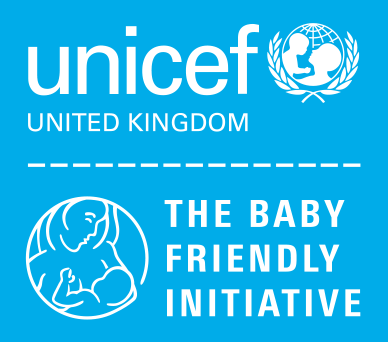These studies explore the effects of breastfeeding and breastmilk on infant cancers, illness and infection.
Call to include breastfeeding as a synergistic approach to vaccines for prevention of respiratory syncytial virus disease
Infections with respiratory syncytial virus (RSV) in infancy and early childhood are very common. RSV is the leading cause of bronchiolitis and pneumonia and substantially contributes to the morbidity and mortality of infants and young children worldwide. Despite strong evidence that breastfeeding is an important non-pharmacological approach for prevention of severe RSV outcomes, recent scientific papers and public health communications have neglected breastfeeding as a core RSV-preventive strategy. This commentary highlights epidemiological evidence of the protective effects of breastfeeding as a key non-pharmacological intervention, discussing its synergistic role in RSV prevention and supportive role in the care of sick infants.
Is Mother’s Own Milk Lactoferrin Intake Associated with Reduced Neonatal Sepsis, Necrotizing Enterocolitis and Death?
Researchers found that maternal Lactoferrin intake and mother’s own milk intake in the first 10 days of life is associated with lesser rates of late-onset sepsis (LOS), necrotizing enterocolitis (NEC) and death in the first 8 weeks of life in newborns with a birth weight <2,000 g. It is therefore highly recommended to encourage human milk intake for all newborns.
Breastfeeding and the risk of childhood cancer: a systematic review and dose-response meta-analysis
This meta-analysis of 45 articles aimed to quantitatively summarise the available evidence on the association of breastfeeding with the risk of childhood cancer. Of the 33 studies relating to the association between breastfeeding and risk of childhood leukemia, the pooled risk estimates were 0.77 for ever versus non/occasional breastfeeding and longest versus shortest breastfeeding duration group, respectively. There was also clear indication for non-linear dose-response relationship between breastfeeding duration and the risk of childhood leukemia (P non-linear < 0.001). The most protective effect was observed at a breastfeeding duration of 9.6 months. Conclusions support a protective role of breastfeeding on the risk of childhood leukemia, also suggesting a non-linear dose-response relationship. Further studies are warranted to confirm the association between breastfeeding and risk of childhood neuroblastoma.
Maternal HIV drug resistance is associated with vertical transmission and is prevalent in infected infants
This study aimed to assess if maternal HIV drug resistance is associated with an increased risk of HIV vertical transmission and to describe the dynamics of drug resistance in HIV-infected infants. An analysis of 85 cases and 255 matched controls indicated that maternal HIV drug resistance and maternal viral load were independent risk factors for vertical transmission during breastfeeding. This suggests that nevirapine alone may be insufficient infant prophylaxis against drug-resistant variants in maternal breastmilk. These findings support efforts to achieve suppression of HIV replication during pregnancy and suggest that breastfeeding infants may benefit from prophylaxis with a greater barrier to drug resistance than nevirapine alone.
“In the United States, we say, ‘No breastfeeding,’ but that is no longer realistic”: provider perspectives towards infant feeding among women living with HIV in the United States
This study highlights the challenges experienced by health providers and patients in low- and high-resource countries in regards to contrasting recommendations of infant feeding practice by mothers living with HIV. Recommendations in the United States are that mothers living with HIV formula feed their infants, as opposed to the World Health Organization’s recommendation of exclusive breastfeeding with ongoing antiretroviral therapy. This study uses multiple methods to understand providers’ infant feeding perspectives on caring for their pregnant and post-partum WLHIV in the U.S.
Human milk and infants with congenital heart disease: A summary of current literature supporting the provision of human milk and breastfeeding
This review highlights the role of human milk in supporting the health of infants with congenital heart disease. Researchers found that infants receiving an exclusive human milk diet are at a lower risk for necrotizing enterocolitis (NEC) and will have improved weight gain, and that infants with chylothorax who receive skimmed human milk have higher weight-for-age scores than formula-fed infants. The authors argue that given these benefits, evidence-based lactation education and care must be provided to mothers and families prenatally and continue throughout the infant’s hospitalization. If a mother’s goal is to directly breastfeed, this should be facilitated during the infant’s hospital stay.
Older research
- Greaves, Mel, (2018). A causal mechanism for childhood acute lymphoblastic leukaemia, Nature Reviews Cancer, doi.org/10.1038/s41568-018-0015-6
- Colaizy, T, et al (2016), Impact of optimised breastfeeding on the costs of necrotizing enterocolitis in extremely low birthweight infants, Journal of Pediatrics, doi: 10.1016/j.jpeds.2016.03.040
- Colaizy, T et al (2016), Impact of Optimized Breastfeeding on the Costs of Necrotizing Enterocolitis in Extremely Low Birthweight Infants, Journal of Pediatrics, 10.1016/j.jpeds.2016.03.040
- World Health Organization, United Nations Children’s Fund. Guideline: updates on HIV and infant feeding: the duration of breastfeeding, and support from health services to improve feeding practices among mothers living with HIV. Geneva: World Health Organization; 2016.
- Lewandowski, A et al (2016), Breast Milk Consumption in Preterm Neonates and Cardiac Shape in Adulthood, Pediatrics, 10.1542/peds.2016-0050
- Boone, K, et al (2016), Feeding at the Breast and Expressed Milk Feeding: Associations with Otitis Media and Diarrhoea in Infants. The Journal of Pediatrics, http://dx.doi.org/10.1016/j.jpeds.2016.04.006
- Chonmaitre, T, et al (2016). Acute Otitis Media and Other Complications of Viral Respiratory Infection. Pediatrics, 10.1542/peds.2015-3555
- Shinnick, J et al (2016), Effects of a Breast Milk Diet on Enteral Feeding Outcomes of Neonates with Gastrointestinal Disorders, Breastfeeding Medicine, doi:10.1089/bfm.2016.0002



